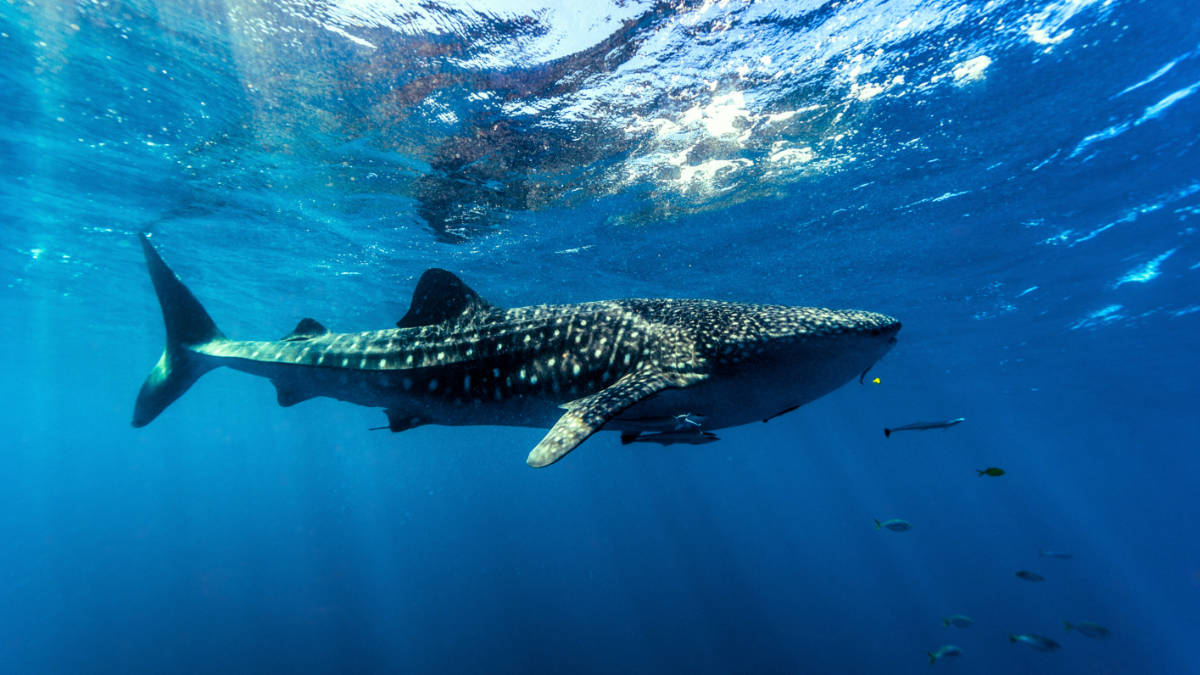Miramar Resources circles big catch with new IOCG targets at Whaleshark

Miramar Resources’ Whaleshark asset is about 40km east of Onslow in WA. Pic: Getty Images
- New modelling outlines fresh IOCG targets at Miramar’s Whaleshark
- The targets overlap gravity and magnetic anomalies, typical of many large IOCG deposits
- Miramar is examining methods to refine and prioritise the targets before further drilling
Special Report: A fresh dive into geophysical data at Miramar’s Whaleshark project has uncovered a school of new targets prospective for iron oxide copper-gold (IOCG) mineralisation, pointing to deeper exploration potential.
Whaleshark is one of Miramar Resources’ (ASX:M2R) four exploration projects in WA’s Gascoyne region, characterised by a Proterozoic banded iron formation, metasediments and a granodiorite pluton beneath 100m of Cretaceous basin sediments.
Previous aircore drilling in 2022 revealed geochemical anomalism and alteration consistent with IOCG mineralisation at the project.
Further exploration a year later, through EIS co-funded diamond drilling, intersected chalcopyrite (a copper sulphide mineral) in two holes, including along an iron-rich NW-trending structure that crosscuts the granodiorite.
Shallow basement rocks provide advantage
M2R executive chairman Allan Kelly said the new modelling identified several new targets with overlapping gravity and magnetic anomalies, which is a key signature of many large IOCG deposits.
“At Whaleshark, we have strongly anomalous copper, gold and other IOCG pathfinders, IOCG-style alteration and copper sulphide mineralisation associated with iron-rich rocks,” he said.
“A key advantage of exploration at Whaleshark is that the prospective basement rocks are much shallower than in other IOCG provinces, such as the Stuart Shelf in South Australia.”
Background on the MVI modelling technique
M2R has adopted a novel computational method that has recently been developed to address the issue of remanence and other anisotropic phenomena – these factors distort the magnetic field, leading to inaccuracies in interpretation and incorrect drill-hole placement when testing magnetic anomalies.
Magnetisation Vector Inversion (MVI) is a technique for solving the magnetisation amplitude and direction, irrespective of remanent magnetisation.
At Whaleshark, the analysis of the MVI voxel model has facilitated structural analysis, including the identification of collapse structures and the mapping of hydrothermal migration and zones of pervasive alteration.
In addition, deep fluid pathways defining potential host environments for larger deposits have been identified.
What else is happening?
To advance drilling plans, the company is working to refine and rank IOCG bedrock targets at Whaleshark through infill gravity and MT surveys.
Miramar remains active across several other projects in its portfolio including Gidji, also in WA near major gold deposits owned by Northern Star Resources and Zijin, where it is refining bedrock gold targets.
Watch: Gidji gold footprint grows with latest drilling
The current drilling program is about two-thirds completed with first assay results expected in coming weeks.
A field trip to the Bangemall project has also wrapped up, where Miramar has proved the existence of mafic cumulate rocks and nickel and copper sulphides in multiple RC drill holes over a strike length of 35km.
This article was developed in collaboration with Miramar Resources, a Stockhead advertiser at the time of publishing.
This article does not constitute financial product advice. You should consider obtaining independent advice before making any financial decisions.

SUBSCRIBE
Get the latest breaking news and stocks straight to your inbox.
It's free. Unsubscribe whenever you want.
By proceeding, you confirm you understand that we handle personal information in accordance with our Privacy Policy.








